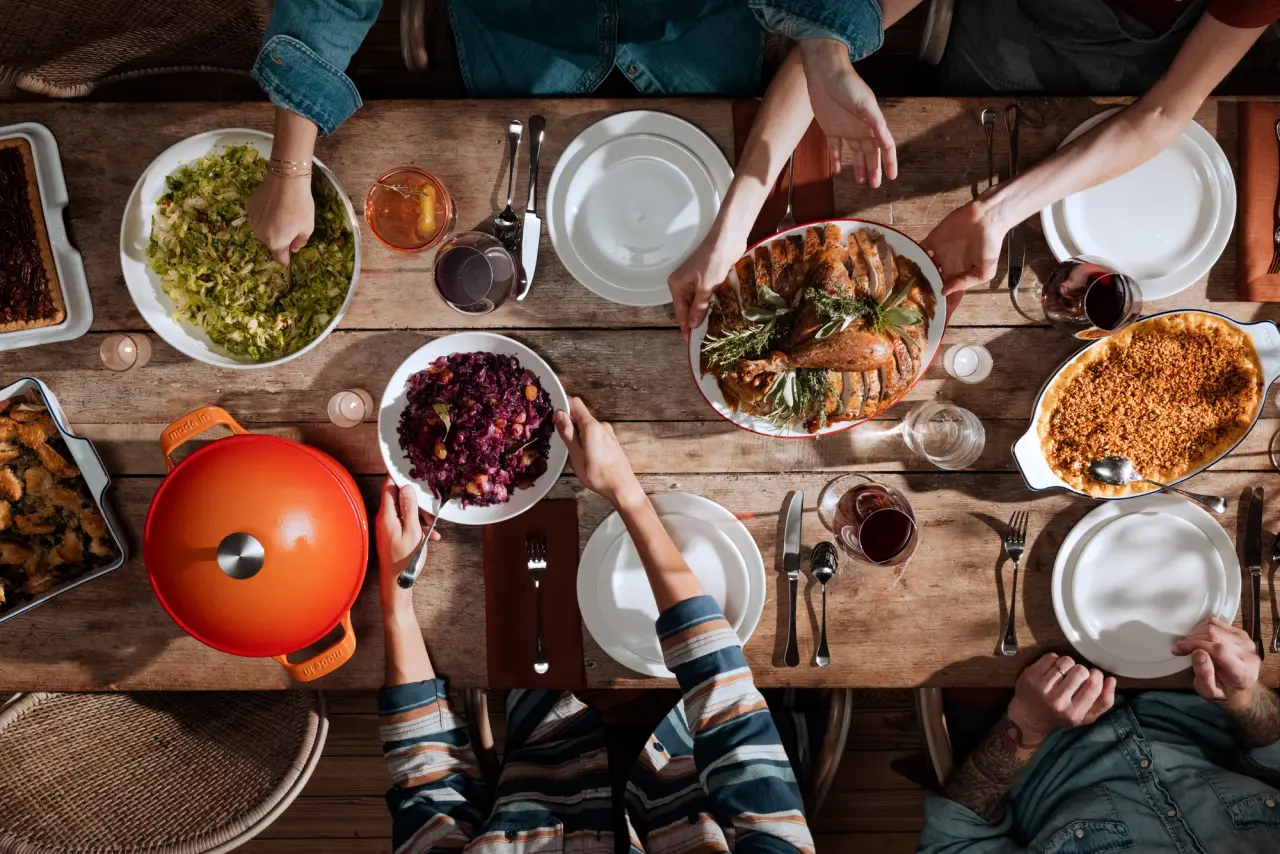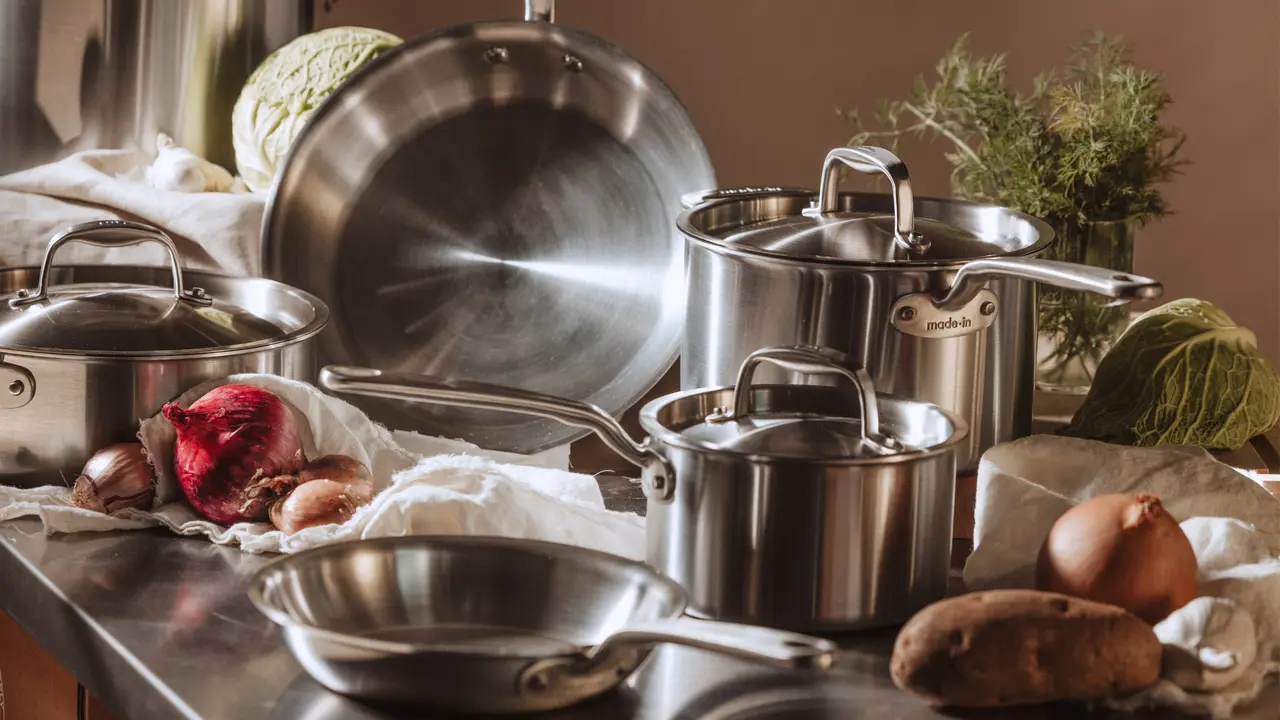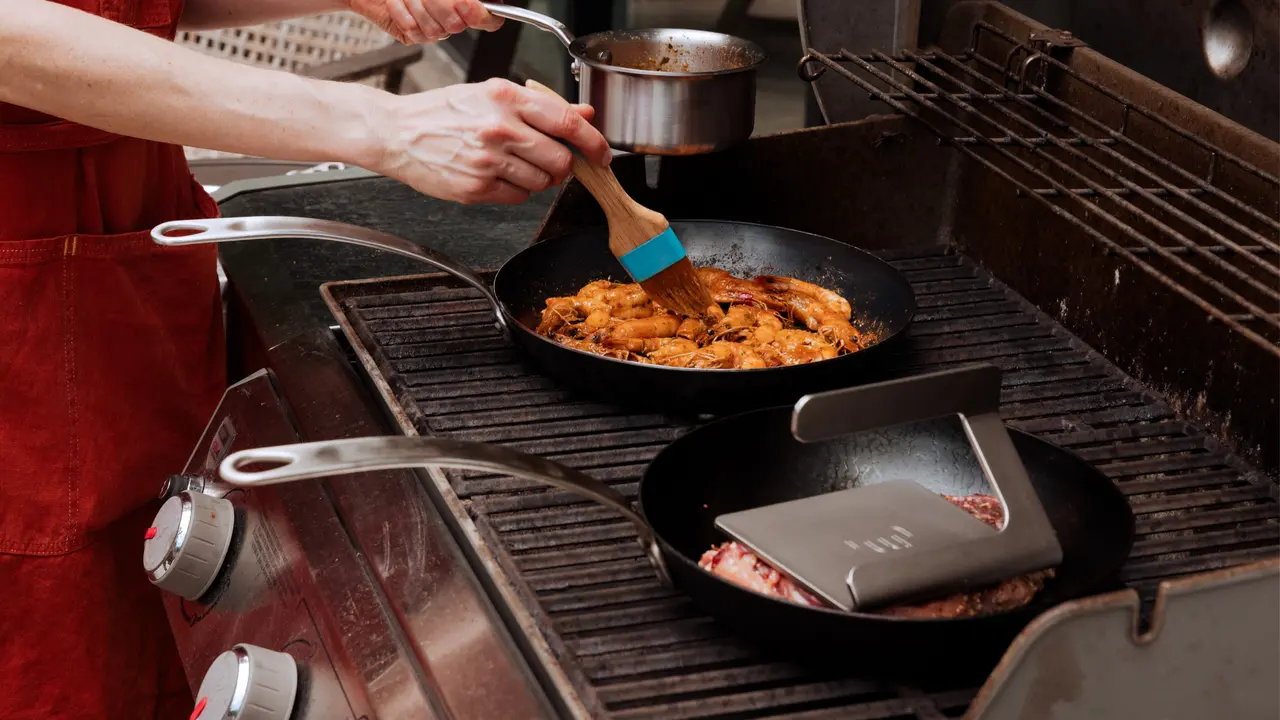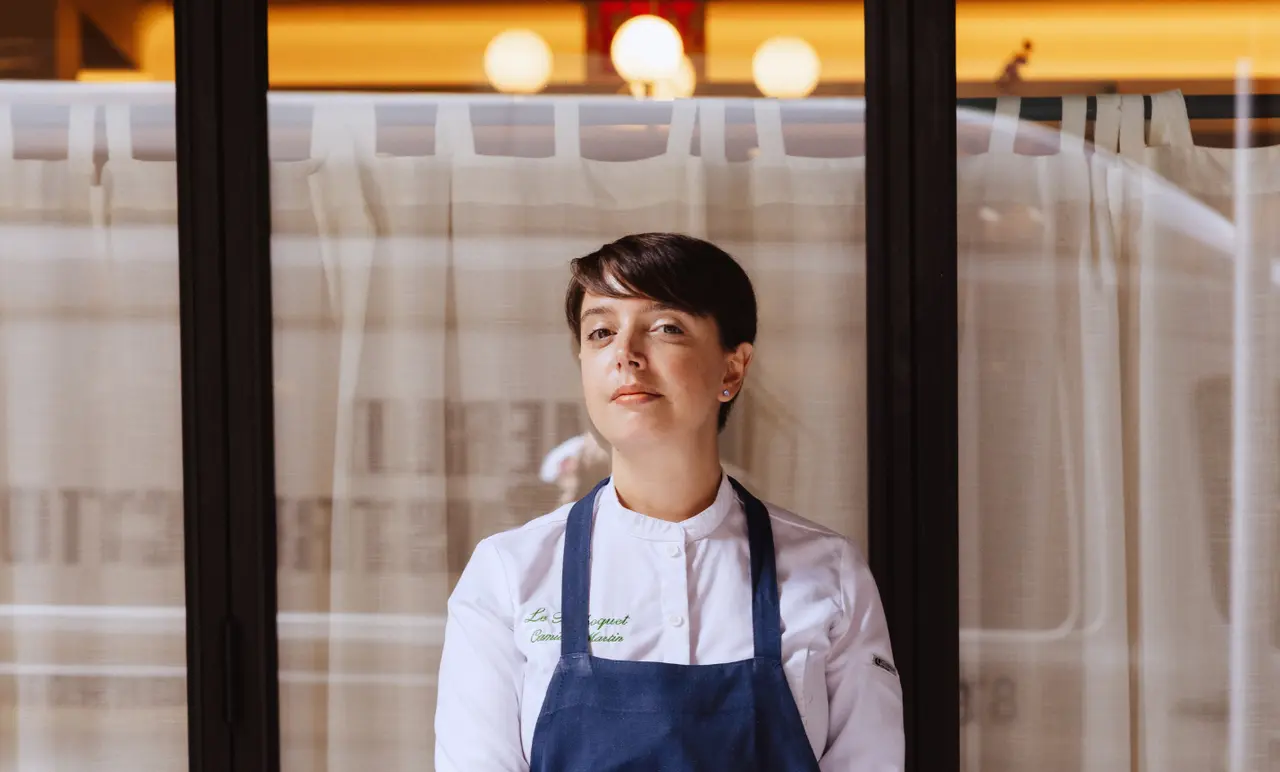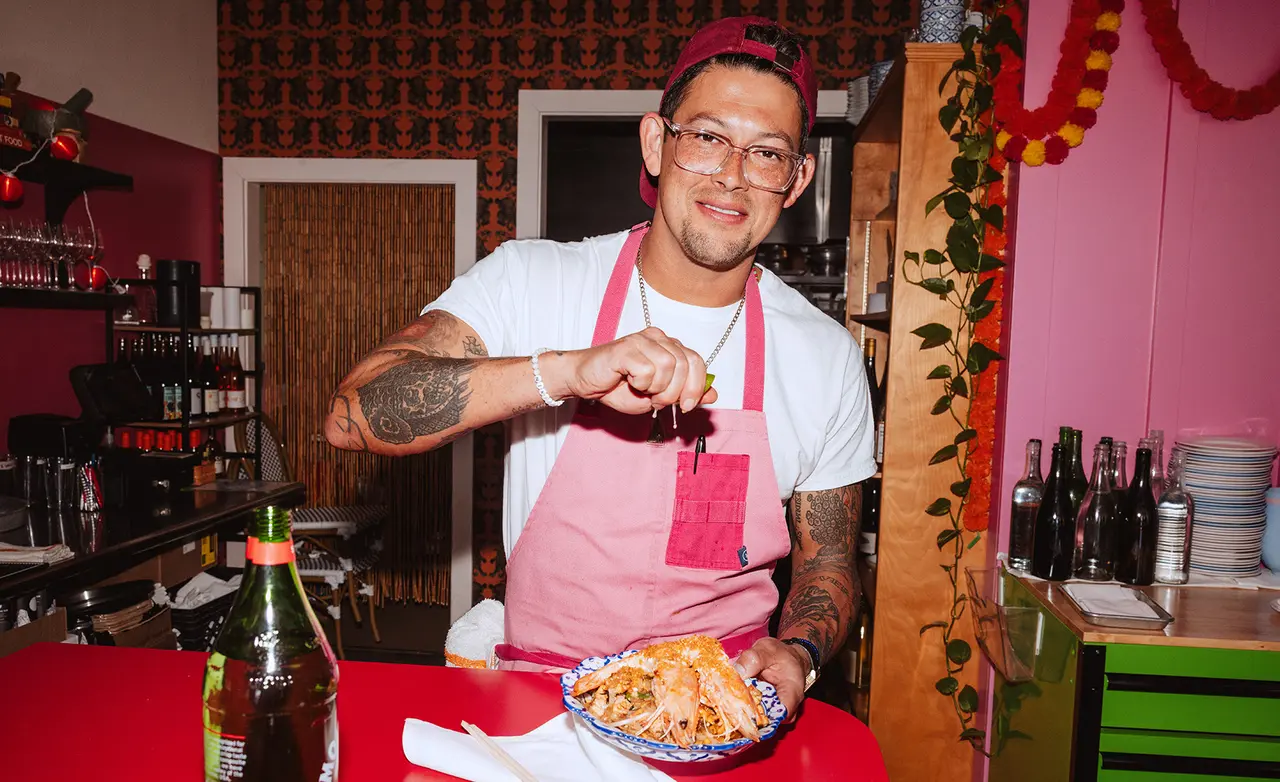“I have a 12-year-old python named ‘Mosh Pit,’” Misti Norris says as her cleaver glides cleanly through the carcass of the semi-frozen half-pig sprawled on the table before her. She’s unflinchingly poised as she shatters bones, pops joints, and trims fat, wadding it up into an amorphous blob by her side. “I love him so much.”
It is in these moments that Norris feels most calm. “Butchering, taking apart pigs, is therapeutic, honestly, and that might sound weird, but when I’m doing it, everything just makes sense.”
While now an acclaimed chef, skilled butcher, and the owner of Petra & The Beast, one of the more prominent restaurants in Dallas, Norris never thought she’d be doing this for a living. “I always said I’d never open a restaurant, and that anyone who did, well they were crazy,” she says. “This is the tenderloin by the way,” she grins, removing a long strip of pork and laying it delicately in a clear, laminate bucket beside her.
Norris traces her interest in food back to her grandmother whom she always called Maw-Maw. “She made these boudin balls, and I remember eating them and thinking what are these? I had to know how to make them,” she said. “They were just filled with flavor, sure, but there was something about sharing and being together and eating that just stuck with me.”
Growing up in Houston, Norris watched as her Maw-Maw struggled to have a life outside of her restaurant. It made her uneasy about pursuing any sort of career in the food world. “It just seemed like it wasn’t something I wanted for myself,” Norris said.
Instead, she became a skilled gymnast with a specialty for floor routine (yes, she can still do a backflip). She competed internationally and trained to be on the Olympic National Team. During her Sophomore year, she decided it wasn’t for her anymore, and stumbled headlong into her first kitchen job at a local retirement center.
“That was honestly the greatest job,” Norris laughed, “It was like being in their home. They’d invite me in, and we’d hang out, play bridge, and drink gin the whole time.”
Even still, a career in a kitchen, one that paid the rent, seemed like a stretch. She attended college and fell in love with anatomy— “I just loved learning how everything worked”—and after trying out a few majors—fashion design, was one—she eventually landed in culinary school. But it wasn’t long before she’d drop out and go to work in a restaurant.
“I was lucky enough to get to work for some great chefs who took me under their wing and taught me a lot,” she recalled.
As her skills grew, so did her passion for the work. “It became my goal to learn how to take apart a whole pig,” she said. Climbing the ranks in the restaurant world, she still thought owning a restaurant was insane. And then one day, while she was on a trip to New York, a friend texted her about a space—an abandoned gas station in Old East Dallas built in the 1930s. She put her entire life’s savings into it.
These days, Norris defines the food she cooks by four f’s: Farm, Forage, Ferment, and Fire. The restaurant she built is a place where staff and guests alike can feel comfortable to learn and build a sense of community around the process.
“Days like these are the most important for us,” Norris says softly, her eyes focused on the pig in front of her. Her cleaver cleanly separates the ribcage, and riblets are added precariously to the top of the laminate bin, now overflowing with hunks of meat. “It’s a teaching moment that we take very seriously.”
Once every few weeks, her staff joins her for a masterclass on taking apart an entire pig (or goat, or whatever else is being delivered that day). It’s not just the chefs either, regardless of whether they work in the front of the house or the back, everyone in the restaurant learns and develops their understanding of the process that produces the menu each night.
“It’s obviously important for my cooks to know how to do something like this, but it’s equally important for servers, too,” she says. "It’s important for everyone to understand what true farmed food is and the importance of raising animals properly.”
This respect takes the form of utilizing the entire animal throughout the restaurant. The menu is littered with charcuterie boards, stocks rendered from bones, homemade sausages, and delicacies like pig tails or trotters. All of this is complemented by an in-house pickling program consisting of koji and kimchis, a cheeto puff miso, and a litany of other preserved accoutrements that enhance every corner of the menu. For decoration, pig skulls are placed precisely along the cabinetry in the restaurant’s dining room, weaving their way around bottled vinegars and bouquets of dried cherry blossoms.
“After all, how can you really respect what you’re doing,” Norris says, now washing her hands, “or what you’re cooking, or what you’re serving to people, if you don’t break it down and at least try to understand everything going on in there.”

